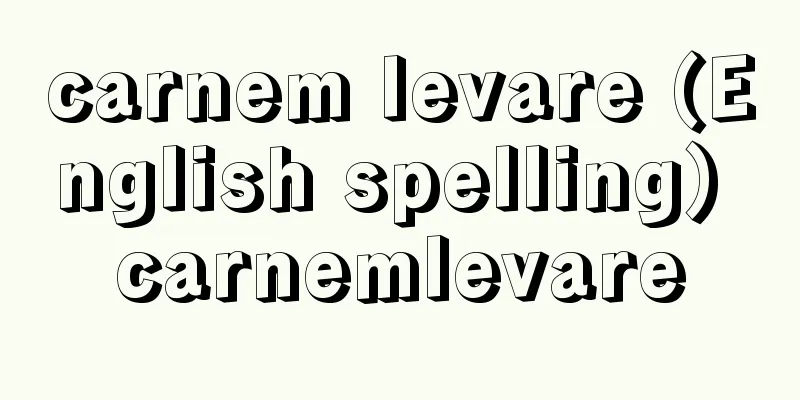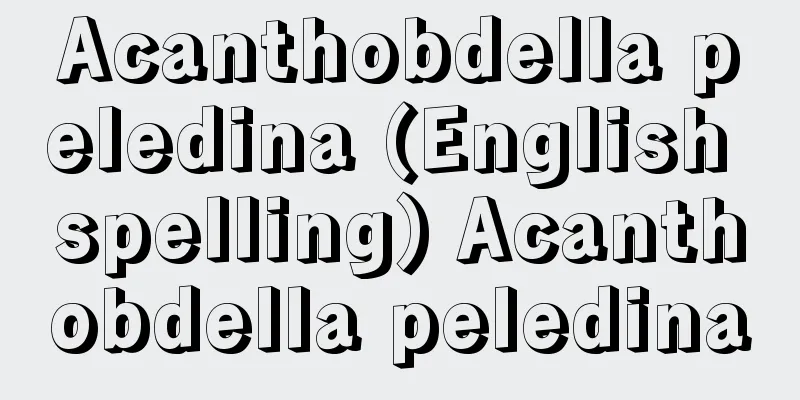Master and apprentice - Oyakatakokata

|
They are also called boss and subordinate, or oya-ko. In general, they are used to mean when people who are not real parents or children are regarded as parents and play the role of parents, or children and play the role of children. The origin of the Japanese word is thought to be oya-ko. Oya-ko is often written in kanji as parent and child, so it is thought to refer to real parents and children, but this was not necessarily the case. The words umi-no-oya and umi-no-ko were used to refer to real parents and children. In ancient times, oya-ko referred to the head of a labor organization under the clan system and the workers as the labor unit. It also contained the meaning of master and servant. However, as the clan system broke down, blood-related groups and labor organizations no longer necessarily coincided. At that stage, blood-related groups were called oya and ko, and the terms oyakata and kokata came to be used to describe the relationships in labor organizations separately. In this way, the two words for blood-related parents and children, and the non-blood-related master-servant relationship of oyakata and kokata, were words that arose from the same cultural origin. Therefore, it is not appropriate to interpret the oyakata-kokata relationship as a fictitious relationship between real parents and children. [Tetsuo Ninomiya] Parent-child typeWhen non-blood relatives form a parent-child relationship, the general term is "parent-child formation," and there are two types. One is when a person takes on a temporary parent in infancy, shortly after birth, and the other is when a person takes on a temporary parent around the time of reaching adulthood. The former includes adoptive parents at birth, parents who find a child born in an unlucky year, and parents who give the child a name. The latter includes parents who wear eboshi hats or kane hats at coming-of-age ceremonies, and parents who act as matchmakers at marriage. There are many examples of this, but in most cases, parent-child formation takes place at a time of uncertainty in life. Of these, the term "oyakata-kokata" or "oyabun-kobun" refers to the second type of formation, which occurs during a time of social uncertainty. When such a relationship between master and subordinate is formed, a certain ritual is usually followed. After the relationship is formed, the relationship is accompanied by the master's protection and the subordinate's service. In this case, the master not only provides spiritual protection, but often also material protection. In response, the subordinate provides labor to the master and helps with annual events. [Tetsuo Ninomiya] Main family/branch familyIn times and societies where the family system was developed, the relationship between master and subordinate was established within the family unit. The main family became the master, and the branch family became the subordinate. In this case, the branch family included not only blood-related branches, but also non-blood-related servant branches. The Chinese character "oya" was also used to refer to the main family, which was the legitimate family. The relationship between master and subordinate was established between the non-legitimate (collateral) branch family. When the family system was disintegrated or the main family was weakened, the branch family would seek out other powerful families other than the main family to become master, or would seek out families that were not originally related to the main family. Furthermore, relationships also began to arise between individuals, regardless of the relationship between the families. In rural areas, the relationship between master and subordinate was also commonly established between the main landlord family and the tenant branch family. They were also formed among city merchants and artisans, and in the yakuza and tekiya communities. Generally speaking, the relationships between master and subordinate, or boss and subordinate, must be said to be of a pre-modern character; however, even in modern society, variations on the boss-subordinate relationship can appear in companies, government agencies, factions within political parties, and academic factions. [Tetsuo Ninomiya] The familial nature of Japanese societyAs we have seen above, if we consider Japanese society as a fan, we can think of Oya as the key element. In this regard, when we look at the social structure of our country, the principle of Oya or Oya-ko relationships permeated the family (house), relatives, neighborhood, village, and even the entire society in traditional rural society. This is also true to a large extent in urban society. The Japanese character of our society can be found in this way. This can also be seen from the fact that the master-subordinate relationship is hardly found in other countries. There are similar things such as the Patron der Klienten (nobles who protect the commoners) in ancient Rome, the Hamburger Zimmerleute (apprentice carpenter's guild) in Europe, and the Compère (godfather) and Commère (godmother) in baptism, but it is not known whether they are the same as the Japanese one. And even if they are the same, they are not as common as the Japanese one. [Tetsuo Ninomiya] "The Definitive Collection of Yanagita Kunio 15" (1969, Chikuma Shobo)" ▽ "The Collected Works of Ariga Kizaemon IX" edited by Nakano Taku et al. (1970, Miraisha)" ▽ "The Structure of Pathological Groups - A Study of Boss and Subordinate Groups" by Iwai Hiroyuki (1963, Seishin Shobo)" ▽ "A Study of Merchant Family Associations" by Nakano Taku (1964, Miraisha)" ▽ "Issues in Japanese Folklore Studies - Research Presentation Commemorating the Centennial of Yanagita Kunio's Birth" edited by the Japanese Folklore Society (1978, Kobundo)" ▽ "Village and Group" by Ninomiya Tetsuo (included in Lecture Series on Japanese Folklore 2: Social Structure, 1980, Yusei-do)" ▽ "Human Considerations in Modern Sociology" edited by Ninomiya Tetsuo et al. (1977, Academia Publishing) [Reference items] | | |Source: Shogakukan Encyclopedia Nipponica About Encyclopedia Nipponica Information | Legend |
|
親分・子分あるいはオヤ・コともいわれる。一般的な意味は、実の親でない者、あるいは子でない者が、互いに、親とみなされてその役割を果たしたり、あるいは子とみなされてその役割を果たしたりするときの意味で使われる。日本語の起源は、オヤ・コにあると考えられる。オヤ・コは、漢字では親・子という文字をあてることが多いので、実の親・子をさすように考えられているが、かならずしもそうではなかった。実の親・子をさすのには、別にウミノオヤ・ウミノコということばが使われていたのである。オヤ・コというのは、古代において、氏族制度下の労働組織の長と、その労働単位としての働き手をさすことばであった。そして、それには主従の意味が含まれていた。 ところで、氏族制度が解体するにつれて、血縁集団と労働組織が、かならずしも一致しなくなった。その段階で、血縁集団のほうをオヤ・コといい、これと分けて労働組織のほうの関係を言い表すために、オヤカタ・コカタということばが使われるようになった。このように、血縁の実の親・子と、非血縁の主従関係にある親方・子方という二つのことばは、同一の文化的起源をもって発生したことばであった。したがって、親方・子方関係は実の親・子の擬制的関係であるとする解釈は、適当ではない。 [二宮哲雄] 親子成りの型非血縁者がオヤ・コ関係を結ぶことを総称して「親子成り」というが、それには二つの型がある。一つは、生まれてまもなく幼少期に仮の親をとる型であり、二つは、成年期に達するころに親をとる型である。前者には、出産時の取上げ親、厄年に生まれた子の拾い親、名前をつけてもらう名付け親などがある。また後者には、成年式のときの烏帽子(えぼし)親、鉄漿(かね)親、結婚時の仲人(なこうど)親などがある。これらの例は非常に多いが、いずれも人生途上不安のある時期に親どりを行う場合が多い。このうち、普通、親方・子方あるいは親分・子分とよばれるのは、社会的に不安の感ぜられる時期に結ばれる第二の型のものについてである。 こうした親方・子方関係が結ばれるときは、一定の儀礼を踏むのが常である。そしてその関係が結ばれたあとは、そこには親方の保護と、それに対する子方の奉仕の関係が付き物となる。この場合親方は、精神的保護を与えるだけでなく、物質的にも保護を行うことが多い。それに対して子方は、親方に労力を提供したり、年中行事の手伝いをしたりする。 [二宮哲雄] 本家・分家家の制度が発達した時代や社会では、親方・子方関係は、家を単位として結ばれた。そして本家が親方となり、分家が子方となった。この場合分家といっても、血縁分家だけでなく、非血縁の奉公人分家も含んだ。オヤという漢字には祖という文字もあてられたが、このことばには、嫡系の家とか本家をさす意味もあった。それと非嫡系(傍系)の分家との間で、親方・子方関係が結ばれたわけであった。家の制度が解体化したり、本家が弱体化したりすると、分家が本家でない他の有力家を求めて親方どりをしたり、またもともと本家・分家関係のない家に求めたりすることも生じた。また、家と家との関係によらず、個人と個人の間で結ばれるということも生じるようになった。親方・子方関係は、農村では、地主本家と小作分家の間で結ばれるという形も一般的であった。また、都市の商工家の間で結ばれたり、やくざや的屋(てきや)の社会で結ばれることもあった。 総じて親方・子方、親分・子分の関係は、前近代的性格をもったものといわざるをえないが、近代社会になっても、企業や官庁、政党内の派閥あるいは学閥などのなかに、親分・子分の変形が現れることもある。 [二宮哲雄] 日本社会の家族主義的性格以上みてきたところからも明らかなように、日本の社会を扇とした場合、そのかなめにあたるものはオヤであると考えることができる。この点、わが国の社会構造をみても、オヤあるいはオヤ・コ関係の原理は、伝統的な農村社会では、家族(家)、親族、近隣、村落を貫き、ひいては全体社会をも貫いていた。このことは都市社会においても多分にいえる。わが国社会の日本的性格は、このようなところに求められてよい。これは、親方・子方関係が外国ではほとんどみつけだされないことからもいえる。類似のものは、古代ローマのパトロン・デア・クリエンテンPatron der Klienten(平民保護貴族)や、ヨーロッパのハンブルガ・ツィマロイテHamburger Zimmerleute(徒弟の大工組合)、あるいは洗礼の場合のコムペールCompère(代父)やコムメールCommère(代母)など、あるにはあるが、日本のものと同じ性格のものかどうかわかっていない。またもし同じ性格のものだとしても、日本のものほどの一般性はない。 [二宮哲雄] 『『定本柳田国男集15』(1969・筑摩書房)』▽『中野卓他編『有賀喜左衞門著作集Ⅸ』(1970・未来社)』▽『岩井弘融著『病理集団の構造――親分乾分集団研究』(1963・誠信書房)』▽『中野卓著『商家同族団の研究』(1964・未来社)』▽『日本民俗学会編『日本民俗学の課題――柳田国男生誕百年記念研究発表』(1978・弘文堂)』▽『二宮哲雄著『ムラと組』(『講座日本の民俗 二 社会構成』所収・1980・有精堂)』▽『二宮哲雄他編著『現代社会学の人間的考察』(1977・アカデミア出版会)』 [参照項目] | | |出典 小学館 日本大百科全書(ニッポニカ)日本大百科全書(ニッポニカ)について 情報 | 凡例 |
>>: Master painter - Oyakataka
Recommend
Fixed point theorem
Let X be a set and f be a mapping from X to X itse...
Fulmarus glacialoides (English spelling) Fulmarus glacialoides
…Shearwater [Hiroshi Hasegawa]. . … *Some of the ...
Coligny (English spelling) Gaspard de Châtillon, Comte de
Born: 16 February 1519, Châtillon-sur-Loing Died A...
Hoosier State
...The state's name means "Indian land.&...
Cabo Verde (English spelling)
Official name: Republic of Cabo VerdeRepública de ...
Eyadema, G.
...The Kabre people, a representative example of ...
Zarkhi, AG (English spelling) ZarkhiAG
… [After "Thaw"] The "thaw" p...
Uncle
〘Noun〙 ("O" is a prefix) A feminine word...
Yanagisawa Kien
Year of death: September 5, 8th year of the Horeki...
Demetrios (of Phaleron) (English spelling)
A scholar and politician born in Phaleron, a port ...
Cryptochiton stelleri (Large stone turtle shell) - Cryptochiton stelleri
A mollusc of the Chiton class and family Cootidae ...
Ginjakuzankanbo - Tomb of the Han Dynasty
Two tombs from the early Western Han period were ...
al-Mawṣil (English spelling) alMawsil
...A city in northern Iraq, on the west bank of t...
Parade (English spelling)
A procession with a spectacle element. It is often...
Hijikawa River
A river that flows northwest through the western p...

![Shizuoka [city] - Shizuoka](/upload/images/67cbc1b428f9b.webp)







